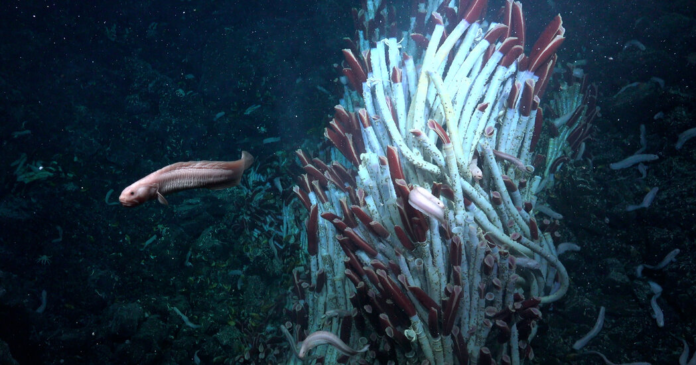But not all experts were so surprised by the discovery.
“I think it makes perfect sense,” said Julie Huber, a marine geochemist and microbiologist at the Woods Hole Oceanographic Institution in Massachusetts who wasn’t involved with the work. “The shallow subseafloor, where temperatures are likely cool enough for animals to survive, is what I think of as a ‘subseafloor conveyor belt’ for microbes, nutrients and, now, animals.”
Much about these unusual habitats is a mystery. But, like many revelations found at the bottom of the sea, this discovery once again pushes the boundaries of what scientists consider possible — perhaps even normal — for life on Earth.
Hydrothermal vents, first discovered off the Galápagos Islands, are Dalí-esque chimneys and chasms that often grow atop or close to midoceanic ridges — vast volcanic fissures in the seafloor made by the divergence of two tectonic plates. Deep below, the magmatic heat roasts percolating seawater, which jets back out into the water column as superheated, mineral-rich soups.
Despite their extreme natures, these vents are metropolises of strange critters. Common among them are tubeworms, which start life as free-swimming larvae before becoming immobile adults that grow to several feet in length and that are fed by sulfur-eating bacteria living in their guts.




